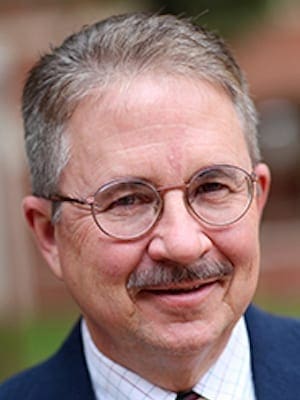An old saying often attributed to Napoleon is: “History is but a fable agreed upon.”
Postmodern philosophy is teaching us that there is no such thing as an objective account of history; history is always written and taught from some point of view. There is no “view from nowhere.”
So, when I read a book purporting to survey history—whether universal history or some specific segment—I always look for the author’s (or authors’) biases.
Who is being included? Who is not included? Is there an ideological agenda? Is there an attempt to social engineer in the book’s presentation of history?
I don’t assume that any of this is conscious, but there is usually some purpose to the selection of people, events and movements.
All research and writing about history is interpretive. You never get all the facts and just the facts. You always get someone’s view of the facts.
So, I tend to agree that “history is but a fable agreed upon.” Nevertheless, there’s value in pushing back against blatant bias, even if unconscious, in historical presentations.
During the past 25 to 50 years, the education profession has witnessed a strong move toward multiculturalism, a push to recover and teach the influences of minorities and women in, for example, American history.
Sometimes, I think that push has gone too far with pernicious results.
Such multicultural presentations of American history often push out study of “DWMs” (dead white males), for instance.
Push back against bias or imbalance in any presentation of history that claims to be relatively fair and complete is, in my opinion, always justified.
The other day I was in a national chain bookstore with my granddaughter in the children’s department. While she looked at books she’s interested in, I wandered around gazing at all the sections.
My eyes happened to light upon a large section of books devoted to a series about great people of history, ranging from Julius Caesar to The Beatles.
There was a good cross section of historic figures from different races, both sexes, many nationalities, and types of professions or interests. I could tell that the editors of the series tried very hard to be inclusive.
As a historical theologian, of course, I looked in vain for any volume dedicated to a primarily religious historical figure.
Who could seriously argue that Martin Luther does not deserve a volume in such a series? What about Pope John XXIII who called and led Vatican II? I could go on and on.
No volume in this series or anywhere in the history section of the children’s department was devoted to a religious figure.
While John of Arc and Martin Luther King Jr. were religious figures, the volumes devoted to them barely touched on their religious beliefs, commitments or practices.
So I picked up the volume on Johnny Appleseed (John Chapman)—a missionary of the Swedenborgian Church, called The New Church in America then, to frontier settlements in 19th century America.
I found only one passing reference to his “preaching to settlers” with no elaboration on the subject.
Little known to most people, Johnny Appleseed’s primary motivation for planting apple orchards across America was to get into frontier settlements and spread the “gospel” of Swedenborgianism.
He founded numerous Swedenborgian church and study groups throughout the parts of America where he traveled.
This aspect of his life deserves more than a passing reference—even in a children’s book.
I looked at several of the other volumes and found a similar ignoring of religion, even when religion was a major part of the person’s life and work.
This experience took me back to when my daughter was in middle school, and I spent some time perusing her world geography textbook.
It wasn’t about land masses or oceans; it was a cultures textbook surveying all the cultures of the world and their histories, beliefs, practices and forms of life.
Religion played a major role in the discussions of most cultures, except Europe and North America. In the chapters devoted to Europe and North America, I found almost no mention of religion.
A passing reference to the Crusades and the Puritans left students with the impression that religion played primarily a negative role in their cultures.
What was said about the Puritans could have been taken right out of a Nathaniel Hawthorne novel.
The section on Martin Luther King Jr. said nothing about his being a Baptist minister or having Christian ideals and motivations.
Even children of atheist families deserve to be taught as complete a view of history as possible, including the roles religion has played in Western culture.
Instead, I fear, religion is being restricted in public spaces where history is taught and written about.
The result is a very incomplete, biased view of history and culture.
 Roger Olson is the Foy Valentine professor of Christian theology and ethics at George W. Truett Theological Seminary in Waco, Texas. He is the author of numerous books, including “Against Calvinism” and “The Story of Christian Theology.” A longer version of this article first appeared on his blog. It is used with permission.
Roger Olson is the Foy Valentine professor of Christian theology and ethics at George W. Truett Theological Seminary in Waco, Texas. He is the author of numerous books, including “Against Calvinism” and “The Story of Christian Theology.” A longer version of this article first appeared on his blog. It is used with permission.
Roger Olson is the Foy Valentine professor of Christian theology and ethics at George W. Truett Theological Seminary in Waco, Texas. He is the author of numerous books, including “Counterfeit Christianity” and “The Story of Christian Theology.”

